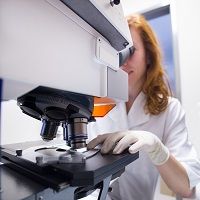Article
IL-17A Not Linked to Behçet's Disease
Author(s):
Researchers did not find any upregulation in the cytokine interleukin 17 A (IL-17A) in active patients with Behçet's disease.

In a study published in PostÄ™py, researchers did not find any upregulation in the cytokine interleukin 17 A (IL-17A) in active patients with Behçet’s disease (BD).
By their nature, studies showing a lack of a connection between a particular cytokine and a condition such as BD aren’t exactly the sexiest. But in this case, the finding contradicts some related (but not identical) research showing a potential link. And the continued mysterious nature of the etiology and pathogenesis of BD makes the finding of particular interest.
An increased expression of IL-17 has been seen in some inflammatory rheumatic diseases such as systemic sclerosis, rheumatoid arthritis, systemic lupus erythematous (SLE), and osteoarthritis (OA). BD gives indications of being similar to these inflammatory conditions, given that it is characterized by recurrent oral aphthous ulcers, genital ulcers, skin lesions, and uveitis. It may also present with arthritis, arthralgia, gastrointestinal tract lesions, and vascular lesions in the large or small vessels. But do autoimmune mechanisms play a role in BD’s pathogenesis?
In the current study, 76 active BD patients (56 females, 20 males) were diagnosed according to the criteria of the International Study Group for BD. Seventy stable BD patients (36 females, 34 males) joined the study as a control group.
Patients who had at least one criterion like oral ulcers, genital ulcers, anterior uveitis, posterior or panuveitis, cutaneous manifestations, pathergy test positivity criteria were accepted to be active BD patients. Peripheral venous blood samples were received from active BD patients and control group after 8 hours of fasting. There was statistically no difference between serum IL-17A levels of active and inactive BD patients (p > 0.05).
“We did not observe an increase in serum IL-17A levels in patients who had oral ulcers compared with patients who do not have oral ulcers, patients who had genital ulcers compared with patients who do not have genital ulcers, patients who had skin involvement (erythema nodosum, papulopustular eruption) compared with patients who do not have any skin involvement, patients who had arthralgia/arthritis compared with patients who do not have arthralgia/arthritis, patients who were taking medications compared with patients who were not taking any medications,” the researchers observed. “There were no patients with uveitis. And there were not enough patients with the gastrointestinal, central nervous system, vascular involvement for statistical assessment.”
Alongside their finding, the researchers mused about whether BD is an autoinflammatory disease at all, because they lack mutations that are seen in many autoinflammatory diseases. “Behçet disease attacks are more frequent than autoinflammatory disease attacks and its severity decreases with time,” they conclude. “Eventually these findings demonstrate that BD is not an autoinflammatory disease.”





